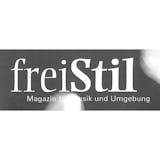


228: SCHWEIZER - FAVRE. Live In Zürich
Intakt Recording #228 / 2014
Irène Schweizer: Piano
Pierre Favre: Drums, Percussion
Recorded live March 22 – 24, 2013, at Rote Fabrik, Zürich.
More Info
Irène Schweizer and Pierre Favre are two likeminded spirits. Since 1966
they play together on a regular bases. With their creative mind, artistic virtuosity and open attitude these two modern jazz pioneers represent the best of what Switzerland has to offer. Their concert in John Zorn's avant garde club 'The Stone' in New York as a part of the two week long 'Intakt'-festival there, was rated by the jazz magazine «New York City Jazz Record» as one of the best concerts in 2012.
In spring 2013 Schweizer-Favre gave three performances on home ground
in the cultural centre 'Rote Fabrik' (Zürich) in front of an enthusiastic audience. The best moments of the concerts are captured on this ultimate 'live'-album of these «two titans of jazz»
(The Guardian).
Album Credits
Cover art and design: Jonas schoder
Photos: Francesca Pfeffer
Liner notes: christian Broecking
Recorded live March 22 – 24, 2013, at Rote Fabrik, Zürich. engineer: Jean-Marc Fussat. Mixed by Jean-Marc Fussat, la Garenne-colombes, France, July 2013. Mastered by Willy strehler, Guntershausen. Produced, published and copyright by Intakt Records, Patrik Landolt.
EUROPÄISCHE JAZZLEGENDEN
BEGEGNUNGEN MIT DEN WEG-BEREITERN TEIL 5
„Ich stamme nicht aus den Staaten, ich bin in Europa geboren. Klassik gehört zu meinen Wurzeln wie auch die Musik des skandinavischen Jazz", sagt Geiger Adam Bałdych an anderer Stelle in diesem Heft. Dass wir seine Musik heute ganz selbstverständlich als eine Form von Jazz wahrnehmen, ist nicht zuletzt ein Verdienst der europäischen Jazzpioniere, die wir in dieser Serie würdigen. Autor Götz Bühler und Fotograf Lutz Voigtländer sind für die neueste Folge nach Zürich, München und Helsinki gereist.
PIERRE FAVRE erinnert sich an frühe Lehrstunden als neugieriger Zuschauer vor dem Schlagzeug von Kenny Clarke - und als reaktionsschneller Schlagzeuger im Orchester einer Stripteasebar.
KLAUS DOLDINGER berichtet über große Auslandstourneen mit Gruppen wie AC/DC als Support und zeigt sich mit seinem Schicksal sehr zufrieden.
DUSKO GOYKOVICHS Wohnung erweist sich als eine Art Museum seiner 65 Jahre währenden Karriere, die ihn von Belgrad über Deutschland hinaus in die USA und die ganze Welt geführt hat - viel Stoff für Erinnerungen.
EERO KOIVISTOINEN hat kein Problem damit, wenn ihm andere immer wieder vorwerfen, dass er sich verzettele - als Jazzer sei er nun mal per se kein Purist und für alles Mögliche offen.
PIERRE FAVRE
ICH FINDE ES WICHTIG, DASS DER SCHLAGZEUGER AUCH MELODIEN HAT. DIE LASSEN EINEN FREI.
„Ich bin überall zu Hause, aber hier fühle ich mich wohler", sagt Pierre Favre. Der melodieverliebte Schlagzeuger meint nicht nur die Schweiz oder seinen Bungalow in einem Vorort von Zürich, sondern vor allem: nicht Paris, wo er immerhin 14 Jahre gelebt hat. „In Paris war es mir zu monarchisch. Zu viele Cliquen und zu viele Probleme, wenn man nicht zur richtigen gehört. Aber es ist die beste Kinostadt. Unglaublich, was es da zu sehen gibt! Die Franzosen sind mehr Gesicht und weniger Ohr, die Deutschen mehr Ohr. Das ist die Kultur. Deswegen bin ich immer eher in den deutschsprachigen Ländern. Man hört anders."
Pierre Favre kam vor 76 Jahren in Le Locle, der Wiege der Schweizer Uhrmacherei, zur Welt. Eigentlich wollte er Bauer werden, aber das Schicksal und sein Bruder hatten andere Pläne. „Mein Bruder ist Schriftsteller, aber als junger Mann hat er Akkordeon auf Bällen gespielt. Ich sollte dazu Schlagzeug spielen. Er hat mir das diktiert.
„Das kommt nicht infrage. Ich will Bauer werden." - „Du spielst, weil Mama gesagt hat, dass ich auf dich aufpassen soll - und ich muss auf diesem Ball spielen." Dann hat er mich ans Schlagzeug gesetzt und mir alles gezeigt: Tango, Paso doble ... Der Ball war ja in zehn Tagen, und bis dahin musste ich das können. Und ich habe es gekonnt. Frag mich bitte nicht, wie. Es war dieses Fieber. Das ist heute noch so. Das Fieber ist sogar gestiegen. Ich bin meinem Bruder dankbar dafür."
Schon bald fieberte Favre vor allem für Jazz. „Mein Bruder brachte mich zu einer Jamsession mit einem Max-Roach-artigen Drummer. Ich sage immer, dass ich keinen Lehrer gehabt habe, aber den hatte ich: Ich war zweimal bei ihm. Er hat gesagt:, Mach so: barampampambadadabambam. Das musst du können, aber du kannst es immer wieder umdrehen und damit spielen.' Zwei weitere Dinge hat er mir außerdem gesagt. Erstens:, Wenn du Musik hörst, egal was, dann denke dir immer, ob du dazu etwas beitragen kannst. Wenn nicht, lass die Hände in den Taschen. Das war meisterhaft! Das Zweite war:, Kümmere dich nicht, was die Leute sagen, mach, was du denkst. Man wird dir sagen, es ist modern und nicht gut, kümmere dich nicht drum und mach einfach weiter."
Nach diesen essenziellen Grundsätzen hat Pierre Favre seitdem, wie er sagt, „eigentlich die ganze Jazzgeschichte gespielt". Er war mit Bud Powell zu hören, mit Albert Nicholas, Benny Bailey, Booker Ervin, Mal Waldron, Lil Armstrong und einmal, als er in der Band von Max Greger spielte, auch mit deren Exmann Louis, dazu viel mit der Sängerin Tamia, Albert Mangelsdorff, den Michels Portal und Godard und natürlich im fantastisch freifliegenden Duo mit der Pianistin Irène Schweizer. „Ich habe auch zum Teil mit denen gespielt, die diese Musik ganz am Anfang geprägt und gemacht haben. Das ist sehr familiär: Warst du nicht gut, wurdest du sofort rausgeschmissen, warst du gut, gehörtest du zur Familie. Das ist heutzutage nicht mehr so. Die Produkte kommen heute sehr viel von Schulen, aber unsere Schule war auf dem Podium in diesen Rattenlöchern und das war nicht leicht. Ich war Berufsmusiker mit 17. Ein Kind! Und ich habe so viele Väter gehabt. Sie sagten:,Du bist gut, ich zeig dir was.' Eine Zeit lang habe ich in einem Nachtclub in Basel zum Tanztee gespielt und jeden Nachmittag kam der Saxofonist Benny Waters vorbei. Wenn man ihn fragte, was er da wollte, sagte er:,Ich komme, um nachzusehen, wie es meinem Sohn geht.' Ist das nicht toll? Er hatte mich ausgesucht als einen, den er beschauen wollte, wie er sich entwickelt. Diese Men-talität erlebe ich heute nicht mehr so viel."
Pierre Favre ist nicht sent...
Come dice Ekkehard Jost nel suo fondamentale volume Europas Jazz (Fischer Verlag, 1987), "Negli anni attorno al 1970, in un fase storica relativamente breve, il Jazz europeo trovò se stesso." Gli elvetici Irene Schweizer e Pierre Favre sono tra coloro che contribuirono fortemente all'identità europea di una musica che fino a quel momento aveva vissuto quasi esclusivamente sotto l'accecante riflesso dei fari statunitensi, tranne poche eccezioni, tra cui quella di Django Reinhardt.
Nel 1968 i due elvetici avevano registrato, in trio con il forte contrabbassista germanico Peter Kowald, lo storico album Santana (nessun riferimento a Carlos, apparso sulle platee internazionali poco dopo), pubblicato dall'etichetta Free Music Production, fondata proprio in quell'anno da personaggi come Kowald e Peter Brotzmann, con il contributo della stessa Schweizer. Il trio si allargherà poco dopo in un quartetto altrettanto formidabile, con l'inserimento di Evan Parker.
Già allora l'impostazione dei musicisti europei era chiara: guardavano al free degli anni Sessanta, sfruttando lo squarcio di libertà operato da quel movimento per costruire una propria identità autonoma, seppure in costante contatto dialettico con i musicisti americani. L'approccio di Favre era già evidente allora, sia nello studio timbrico, con i contrasti ampi tra gli elementi del drum-set che davano vita a melodie molto articolate, che nell'attenzione alle poliritmie, vicine a uno spirito europeo più che africano. Il piano della Schweizer, pur molto influenzato da Paul Bley e Cecil Taylor (ma anche da Abdullah Ibrahim), cercava echi della tradizione folkloristica europea, da lei molto praticata in gioventù.
Nel corso del lungo periodo (più di quaranta anni) che ci separa da allora, i due musicisti hanno condotto la loro vicenda artistica con grande coerenza, sviluppando in modo ammirabile quelle premesse. La Schweizer ha dedicato spesso la propria attenzione al duo con la batteria, sottolineando il suo interesse al ritmo e al pianoforte come strumento in grado di indagare e sviluppare concezioni ritmiche e poliritmiche. Restano celebri e molto significativi i cinque album da lei registrati per l'etichetta Intakt tra il 1986 e il 1995 con altrettanti grandi interpreti della batteria: Louis Moholo-Moholo, Gunter Baby Sommer, Andrew Cyrille, Han Bennink e lo stesso Favre.
Nel contempo il suo pianismo ha sempre più sviluppato l'atteggiamento di libera iterazione gioiosa e cantabile derivante dall'attenzione alla musica del Sud Africa, in particolare di Ibrahim. Il pianista (allora con il nome Dollar Brand) visse in Svizzera negli anni Sessanta e la Schweizer aveva sviluppato una forte propensione per il suo stile; molto spesso era tra il suo pubblico. Poi l'attenzione per il jazz sudafricano si saldò ancor di più con la conoscenza di Chris McGregor, Moholo e degli altri grandi della cerchia Brotherhood of Breath.
Live in Zürich è una significativa gemma che scaturisce ancora da quella miniera del jazz prodotto e pensato in Europa. Registrato nel marzo 2013, si compone di dodici brani che tendono alla brevità o alla lunghezza media. In parte composti insieme, in parte dalla sola pianista. "Painted Face" vede protagonista la percussione precisa, illuministica di Favre. "All Alone" è l'unico standard: il classico di Irving Berlin, ben plasmato dal solo piano. La musica si dipana in screziata lucentezza, in volumi ben modellati, in dialoghi tersi, tessuti con maestria narrativa. Il blues finale, ruvido, accattivante, si chiude con un delizioso cenno a Scott Joplin: "The Entertainer." Due maestri, che hanno ancora tanto da dire.
Zwei unwiderstehliche Duos im Volkshaus
Jazz Es war ein grossartiger Sonntagabend im Zeichen des improvisierten Jazz, mit den beiden Duos Irène Schweizer und Pierre Favre sowie Uri Caine und Dave Douglas.
Für das international renommierte Duo, die Pianistin Irène Schweizer und der Perkussionist Pierre Favre, war es in ihrer 45-jährigen gemeinsamen Karriere eine Premiere am Basler Jazzfestival offbeat aufzutreten – und was für eine. Eigentlich ist für die beiden erfahrenen Musiker jedes Konzert eine Premiere, haben sie sich doch der Kunst des «instant composing» verschrieben. Da werden keine Stücke zum Voraus abgesprochen. Daher gibt es auch keine Ansagen. Oder diese erfolgen höchstens im Nachhinein. Die über 70 Jahre alten Musiker liessen sich ihr Alter nicht anmerken. Auch liess sich keine besondere Fixierung auf den Free Jazz der früheren Freejazzer feststellen.
Enorme stilistische Bandbreite
Die stilistische Bandbreite des gut einstündigen Konzerts war immens. Doch über allem stand das perfekte Interplay der beiden, die selbst bei Pausen und Aussetzern eine eigenständige Art von Kommunikation pflegen. Das alles garnieren sie mit viel Humor und Selbstironie. Das Duo wirkt, als betriebe es eine lockere Konversation und lässt die hohe technische Komplexität seines Spiels vergessen. Obendrein swingt das Ganze in packendem Groove. Kurze Stücke sind angesagt, ganz im Gegensatz zu den langen Zelebrationen, die früher zum Grundstock des Free Jazz gehörten. Als Zugabe spielten sie den «Blues for Crelier», der auch die aktuelle CD «Live in Zürich» (Intakt 228) beschliesst.
Der Pianist Uri Caine und der Trompeter Dave Douglas – mit allen Wassern gewaschene Jazzer aus der New Yorker Szene – waren vom rasanten Auftritt von Schweizer und Favre sichtlich beeindruckt. Die beiden Amerikaner realisierten schon viele Projekte gemeinsam. Als Duo aber sind sie nun zum ersten Mal unterwegs. «Present Joys» (Greansleaves 1037) heisst die CD, die demnächst erscheinen wird und, den Grundstock für das Programm bildet. Tatsächlich musste man sich nach dem nahezu perfekten, von einer zauberhaften Rhythmik geprägten Schweizer-Favre-Auftritt umgewöhnen. Doch dies ging leicht: Caine und Douglas verstehen sich blindlings und verfügen über ein schier unerschöpfliches Repertoire an musikalischen Varianten. Basis ihrer Kompositionen und Arrangements sind alte amerikanische Balladen – wie beispielsweise der Minenarbeitersong «Ham Fist».
Auf höchstem Niveau
Es war wunderbar zu hören, wie bei gleichzeitigem Respekt vor dem volkstümlichen Repertoire hier grossartige Improvisationen gestaltet wurden. Caine brilliert mit einer stupenden, nie dem eitlen Selbstzweck dienende Technik. Sein Spiel ist mal rasend schnell, mal polyglott perlend, dann zurückhaltend perkussiv. Douglas hingegen verzaubert mit wunderbaren Melodien, die gleichzeitig themenbezogen und persönlich gefärbt wirken. Es war eine Stunde mit «Present Joys», verstanden als unmittelbar zu geniessende, grossartige Freudenmomente.
Und noch etwas: Die Akustik im Volkshaus ist ganz einfach hervorragend, vergleichbar mit jener in der Gare Du Nord, wo heute das Wolfgang Dauner Trio auftritt, morgen das Akkordeon-Summit mit dem Luciano Biondini Quartett und am Donnerstag das Doppelkonzert mit Vein und dem Ellery Eskelin Quartett stattfindet.
Una fotografia di Schweizer e Favre dal vivo a Zurigo, in un concerto che ha beneficiato della conoscenza profonda, comunione di intenti e di sentire consolidatasi tra i due. L'incontro tra pianoforte e percussioni, che stimola le caratteri stiche percussive del primo e quelle cantabili delle seconde, è qui meravigliosamente risolto per la complicità del comune retroterra culturale e musicale e la grande apertura mentale. A ricordarci che l'interazione dialogica tra due persone può dar vita a fatti inattesi, la magia e l'imponderabilità del fare musica genera un preziosissimo distillato fatto di una originale sintesi della storia delle musiche improvvisate afro-euro-americane. Fin dalle prime battute di Black Mirror, puntillistico ed energetico, la straordinaria intesa e capacità di ascolto emerge prepotentemente e dopo alcuni momenti, con scale quasi tristaniane, l'atmosfera sale per poi, con la massima naturalezza e fluidità, ridiscendere: la ragione e il pregio del brano, e del disco in generale, stanno in una superiore capacità di muovere e dominare le dinamiche e nello swing sottopelle. In Gemini Constellation riappare per poi subito scomparire e riapparire l'ombra lunga del Tristano più informale. Suoni radi di gong, piatti e campanacci disegnano un paesaggio brumoso e solitario in apertura di Bird of Paradise, prima si avventurano timidi accordi, arpeggi e note ribattute, poi, preso coraggio, cominciano a sgorgare arpeggi acuti che presto lasciano spazio ad una sequenza memore del miglior jazz africano. Un soldato stravinskiano anima Ice Green Blue, da qui si sviluppano gli assoli con un robusto interludio batteristico. L'incedere sghembo, per frasi spezzate e sospese, di Broken Notes celebra, tra il detto e il silenzio, l'equilibrio sull'abisso di monkiana e tristaniana memoria. In Huben Wie Druben monumentali trilli e una frase circolare in crescendo trovano approdo nell'accordo ripetuto, poi elemento gravitazionale del brano. Qui, come altrove, la Schweizer pare voler distillare ed estrarre, con superiori concentrazione e coerenza, frammenti della storia del pianoforte nelle musiche improvvisate; insostituibile l'apporto, sovente paritario, di Favre, emozionante per la totale padronanza timbrico-dinamica del set percussivo, per l'inesauribile fantasia e per la mobilità repentina e fluida. Tutte caratteristiche che rifulgono nel suo solitario Painted Face e, accomunandolo alla pianista svizzera, ne fanno un compagno di viaggio ideale. Il dolcissimo, cantabile All Alone della Schweizer in solitudine, tra movenze gospel e genuinamente africane incanta per la semplicità della melodia e la sincerità emotivo-espressiva. A chiudere il disco, e unire tradizione e ricerca, il soul jazz di Blues for Crelier pare uscito dalla penna d'un Bobby Timmons o d'uno Horace Silver d'annata.
Vitale Musik von Jazz-Senioren
Pianistin Irène Schweizer und Schlagzeuger Pierre Favre eröffnen Festival in Hall
Ein herzlich umjubelter Beginn des Jazz-Art-Festivals mit Irène Schweizer (72) und Pierre Favre (76) in Hall: Die beiden altersweisen Avantgardisten aus der Schweiz boten zeitlose Musik der improvisierten Art.
Schwäbisch Hall. Der Swing-Gitarrist Coco Schuhmann im Jahr 2011, dann Bill Ramsey und im vergangenen Jahr Greetje Kauffeld - der Eröffnungsabend des internationalen Jazz-Art-Festivals in Hall gehört arrivierten Jazz-Senioren. So gehören auch bei der achten Festival-Auflage am Mittwochabend in der sehr gut besuchten Hospitalkirche die beiden Künstler auf der Bühne zur Generation Ü 70: Irène Schweizer und Pierre Favre.
Wie die Zeit vergeht: In den 1960er-Jahren mischten die Pianistin und der Schlagzeuger in der aufmüpfigen Free-Jazz-Szene mit. Nun haben sie das Rentenalter längst erreicht. Aber beide sind kreative Un-ruhegeister geblieben: Irène Schweizer, geboren am 2. Juni 1941 in Schaffhausen, und Pierre Favre, geboren ebenfalls an einem 2. Juni 1937 in Le Locle an der Grenze zu Frankreich.
In der Region von Le Locle hat das Uhrmacherhandwerk Tradition. Davon scheint Pierre Favre geprägt zu sein, wenn er mit sprichwörtlicher Schweizer Präzision" vorgeht. Normalerweise bedient Favre allerlei perkussionistisches Kleingerät aus Metall. Nach Schwäbisch Hall reiste er mit dem Zug und brachte im Handgepäck nur eigene Becken und diverse Schlegel mit. Die Trommeln wurden vom Jazzclub Hall gestellt, darunter wunschgemäß gleich zwei Bass-drums übrigens ein Markenzeichen des sportiven Swing-Haudegen Louie Bellson. Auf ein Hi-Hat (mit zwei per Pedal aufeinander-schlagenden Becken) verzichtete Pierre Favre diesmal.
Subtil und filigran geht Pierre Favre vor, lässt buchstäblich die Trommeln sprechen, entwickelt eine komplexe Polyrhythmik und lässt das Metrum nie penetrant werden. Der Könner, der zehn Jahre als Do-zent an der Stuttgarter Musikhochschule verbrachte, entlockt seinem relativ spartanisch ausgerüsteten Drumset doch noch viele nuancierte Klangfarben. Und vor allem ist er ein guter Zuhörer, der einfühlsam mit Irène Schweizer kommuniziert und interagiert. Seit fast einem halben Jahrhundert spielen die beiden Eidgenossen zusammen, und dies bereitet nicht nur den erfahrenen Künstlern enormen Spaß, wie deren Mi-mik immer wieder erkennen lässt, sondern auch dem Publikum.
Die Pianistin Irène Schweizer pflegte einst einen entfesselten Free-Jazz. Doch nunmehr erlaubt sie tonale Zentren, ein latentes Swingen, Blues-Stimmungen, Spieluhrenhaftes, harmonische Momente, Riffs und ostinate Figuren. Wenn da wiederholt Anklänge an die südafrikanische Kwela-Musik auftauchen, bezieht sich Irène Schweizer offensichtlich auf ihren langjährigen Trio-Drummer Louis Moholo, der aus Kapstadt stammt. Aber sie hantiert dann kontrastierend im Inneren des Flügels und lässt mittels Unterarm-Cluster schrille Dissonanzen erschallen. Ganz vergessen und verpönt sind die wilden Sturm-und-Drang-Zeiten von anno dazumal also nicht.
Toleranz allenthalben - die alters-weisen Avantgardisten aus der Con-foederatio Helveticae (CH) verweigern sich nicht mehr dem Wohltem-perierten, und das Publikum ist aufgeschlossen für Unorthodoxes. Eine
immense Herzlichkeit bestimmt die Atmosphäre in der Hospitalkirche -von Anfang an. Nach der überschwänglichen Begrüßung von Halls Kulturbeauftragter Ute Christine Berger konstatiert Pierre Favre überrascht wie erfreut: „So einen Applaus vor einem Konzert haben wir noch nie bekommen."
Pianist Irène Schweizer has a long history of duo work with idiosyncratic, individualistic drummers including Han Bennink, Mani Neumeier, Louis Moholo, Andrew Cyrille and Günter "Baby" Sommer, among others. These affinities are cemented by her own percussive attack at the keyboard. One of her most frequent musical partners over the decades has been percussionist Pierre Favre. They have a deep and profound history together, paving the way for progressive Swiss jazz more than 45 years ago.
Live In Zürich is their third duo album, and it proves that each musician can still inspire the other, as they move effortlessly between abstraction, post-bop buoyancy and melodic grace. In contrast to its predecessors, the new album-recorded during a three-night stand at Rote Fabrik in the titular city in March 2013-focuses on short, pithy improvisations that nonchalantly capture the full range of their playing: The pair moves easily from dense free-jazz maelstroms to richly melodic balladry.
The pianist gives a lovely Monk-flavored solo reading of the Irving Berlin standard "All Alone," but the other 11 pieces are spontaneous creations that go in varied directions. "Bird Of Paradise" serves up moody introspection and transforms into a McCoy Tyner-grade rhapsody; it's followed by the halting rhythmic flurries of "Ice Green Blue," toggling between pungent bop and glassy clusters. "Blues For Crelier" harks back to the funky sound of early soul-jazz with a touch of the South African kwela that's long enraptured the pianist.
Favre goes it alone on the jaggedly pulsing, pace-quickening "Painted Face," but otherwise he masterfully works to support the pianist, alertly following her lead, pushing and suggesting new routes, but never upstaging her melodic vision. At the same time he's hardly meek; his brisk decision-making and crisp playing consistently bring out the best in his partner.
PREIS DER DEUTSCHEN SCHALLPLATTENKRITIK. BESTENLISTE 1/2014
Lebenslange Vertrautheit dieser beiden Schweizer Charakterköpfe und weltweite Erfahrungen in einem halben Jahrhundert rasanter Entwicklungen und Brüche – das kommt auf diesem Album in den freien Improvisationen der Pianistin Irène Schweizer und des Schlagzeugers Pierre Favre zusammen. Die Perlen aus drei Konzerten in der Roten Fabrik in Zürich werden hier dargeboten. Einfach herzerwärmend, wie die unterbewusst gesteuerten Ideenflüsse aus Partnerschaft und Eigensinn sich zusammenwinden und trennen. Irène Schweizers Formenvorrat ist enorm, er reicht von Erinnerungen des Stride-Stils der zwanziger Jahre, von Blues und Swing bis zu den Clusterstürmen der Neuen Musik.
With the piano a mini-orchestra, instrumentalists who partner with pianists in a duo must bring prodigious chops as well as quick reflexes, becoming crucial in measuring a session's quality.
Piano-trumpet duets have been part of jazz since Louis Armstrong and Earl Hines and pianist Angelica Sanchez and trumpeter Wadada Leo Smith add to this distinguished lineage on Twine Forest. It is Smith's extended techniques that stretch sounds into unexpected tangents as Sanchez, who plays in Smith's Golden Quartet, depends on more chromatic lines to keep the program flowing. The most common scenario is set up on selections such as "Echolocation" and "Light Black Birds". During his resolute march up the scale, Smith wrenches tough phrases from his horn, which are subtly woven back into those compositions' fabrics by a combination of two-handed syncopation and romantic harmonies from Sanchez. The trumpeter's brassy sprints and half-valve actions may be spectacular, yet they maintain a connection with the underlying narrative. And though the pianist's relaxed keyboard sweeps provide continuum, this doesn't mean that she can't forcefully propel her ideas with a kinetic sprawl, as on "Veinular Rub", or layer percussive elements alongside Smith's radical timbre deconstruction on "Retinal Sand". Sanchez expresses rushing excitement most audaciously during the several false climaxes on the title track. As brass motifs range from alphorn-like resonations to bellicose spits, her multi-note responses modify Smith's parts, leading to a relaxed, yet still electrifying finale.
Piano duos probably reached their zenith of popularity during the boogie-woogie craze of the late '30s. Magda Mayas and Chris Abrahams will never be confused with Meade Lux Lewis and Albert Ammons, however; in fact, the cerebral tone investigation they bring to Gardener is even far removed from modern duos like that of Howard Riley and Keith Tippett. Using their instrument as an unaffiliated sound source, the two avoid forthright, linear work, plus play passages on harpsichord and harmonium. However, the resonances and sharpness available from those essentially parlor keyboards is limited, rising from among other textures from time to time, but never with enough force to make a substantial showing. And the two-piano interface, as expressed on pieces such as "Ash Canopy", is almost as rigidly formal as a so-called classical piano duo. There is hope though. On "The Changes Wrought by the Recurring Use of Tools", pianos are extended with internal preparation and the result is much clearer. Using the squeaking, plucking and rubbing of internal strings as unusual leitmotifs opens up the track and decorating the theme with rococo patterns from the harpsichord and smeared harmonium pulses suddenly makes more sense.
Pianist Irène Schweizer and drummer Pierre Favre, who have been improvising together on and off since 1966, offer pure exuberance on Live in Zürich. Drums and piano pairing are common in jazz as doyen Schweizer has demonstrated on many duo discs over the years but as experimental as the playing gets, the two aren't afraid to expose earlier jazz forms. Though two of the first European free jazz players, pianist, 72 and percussionist, 76, can create vibrant blues à la Ray Bryant and Papa Jo Jones or rap out a prototypical bebop line with the aplomb of a Bud Powell, Favre's vigorous kinetics adding a free-jazz overlay. Schweizer improvises with bombast while Favre, who has recorded with atypical partners like a pipa player and a vocal ensemble, is fundamentally a melodic stylist. From the first notes of "Black Mirror", the two set up the modus operandi of the CD: percussive keyboard runs that also outline the melody, plus supple and sinuous drum commentary. Schweizer swirls and slithers her way through the program, adding other motifs, from march tempos and silent-movie accompaniment menace to Viennese school digressions and basic jazz forms. Favre's steady swing is punctuated with distinctly European-timed wood block and cymbal raps and galloping clip-clops. "Night Flights" is the culmination of their skill. The decidedly non-bluesy blues never stops swinging, but after piano attains a sophisticated plateau during a double-timed solo, wooden thumps prolong the now-toughened excitement, without losing any relaxed tastefulness.
Each of these piano duos has created an original take on the form but the most notable set up involves two veterans who have long perfected the concept.
Auch im gesetzten Alter strotzen die beiden Granden der Improvisierten Musik vor Vitalität. Für die kleine Form des Piano/Schlagzeug-Duos hegt Schweizer ja eine besondere Leidenschaft, was ihre künstlerische Vita eindringlich bestätigt. Spielte sie doch mit einigen der ganz großen Schlagzeuger der Jazz-Avantgarde. Eine ganz enge, über die Jahrzehnte währende Partnerschaft unterhält Irène Schweizer mit ihrem Landsmann Pierre Favre. Die spielerische, schnörkellose Tastenhexerin und der perkussive Poet halten nun das dritte Dokument ihrer Diskurse für uns bereit. Die Piano/Drum-Konstellation sei, so sagte die Ambitionierte einmal, ein wichtiger Teil ihrer musikalischen Biografie. Mit jedem Ton, jeder Wendung, jeder Fantasieblüte, jeder Umarmung dieser live abgehaltenen Zwiegespräche mit Favre wird das untermauert. Schweizer hat ihre unnachahmliche Spielweise, basierend auf Verflechtung der Körperlichkeit des afro-amerikanischen Drumming mit der harmonischen und klanglichen Ästhetik der europäischen Tradition, noch souveräner verfeinert. Und Favre ist in originärer Weise in die Tiefen der Vielschichtigkeit seines Instrumentariums, das er quasi als „Percussionorchester“ inszeniert, eingetaucht. Ausdiskutiert werden in den kompakten sensitiven Dialogen Transparenz, Feinnervigkeit, intuitives Verständnis, ein kultivierter Umgang mit Klangfarben. Generell ohne Absprache, die Imaginationskraft des Jetzt zelebrierend. Aber auch augenzwinkernde Adaptionen eines Standards bzw. eines „schweizerischen“ Blues finden Einzug in die brodelnden Doppelconférencen. In diesen spiegeln sich individuelles Profil sowie menschliche und künstlerische Qualitäten, mit all den Stärken und Verletzlichkeiten. Pure Menschenmusik.
Figures emblématiques des musiques improvisées européennes, la pianiste Irène Schweizer et le percussionniste Pierre Favre aiment à deviser ensemble, la confiance qui règne entre leurs instruments les transmutant parfois en jumeaux sensibles. La musicalité de l’un s’empare de la frappe de l’autre et tous deux se mêlent avec bonheur. Ils se répondent, se complètent, s’interrogent, mais sans récitation - pas de « par cœur » ici. Dans leurs échanges, il est question de circulation et de passages. Le duo n’a pourtant pas réécrit le Code de la Route helvète ! Le sentier qu’ils dessinent est familier et escarpé, il les relie comme il rapproche tous les musiciens qui ont croisé leur route, de Joëlle Léandre à Samuel Blaser. Voici quarante-cinq ans qu’ils jouent ensemble. Pourtant, à entendre ce Live in Zürich capté par Intakt Records en mars 2012, on croirait qu’ils se découvrent encore.
Sur « Gemini Constellation », les balais de Pierre Favre teintent de pastel les tréfonds du piano de Schweizer, et la fraîcheur de la discussion se confirme. Il est aérien, elle est plus terrestre… Mais les espaces non confinés où ils évoluent mutent jusqu’à se confondre dans un subtil rapport de forces entre modernité et mémoire. En un demi-siècle, l’impétuosité du dialogue n’a pas décru. Il y a de l’urgence et une flamme rougissante à chaque fronce de leurs mouvements. Ni l’un ni l’autre ne ressent le besoin de l’affrontement, mais au contraire celui du soulignement. Avec Schweizer et Favre, l’instant s’écrit à quatre mains, sans temps faibles. Lorsque le percussionniste évoque un brouillard d’acier sur « Birds of Paradise », la pianiste s’engage dans un discours plus impressionniste qui s’irise de blues à mesure que la frappe se fait plus franche. Une attention mutuelle qui nourrit leurs convictions intimes et construit leur musique. Même lorsque le duo évoque de grandes étendues abstraites, comme sur « Night Flights » où, en un exercice symbiotique, la main droite de Schweizer semble aussi effleurer les cymbales de Favre, une pulsation frénétique peut s’emparer d’une atmosphère inflammable. Celle-ci atteint son point d’incandescence sur le turbulent « Open Star Clusters », peu de temps avant qu’Irène Schweizer ne se lance dans une magnifique évocation du « All Alone » d’Irving Berlin.
Si ancienne que soit leur collaboration, le duo sur disque de ces deux musiciens est toujours un moment exceptionnel. Live in Zürich n’est que leur troisième enregistrement de ce type ; mais le capiteux parfum de rareté qui en émane le rend enivrant. Lorsqu’il se clôt sur un « Blues For Crelier » de rocaille, on y découvre même une forme d’insouciance qui laisse entendre qu’une autre décennie pourrait passer que ces deux-là auraient toujours autant de choses à se dire.
https://www.citizenjazz.com/Schweizer-Favre.html









